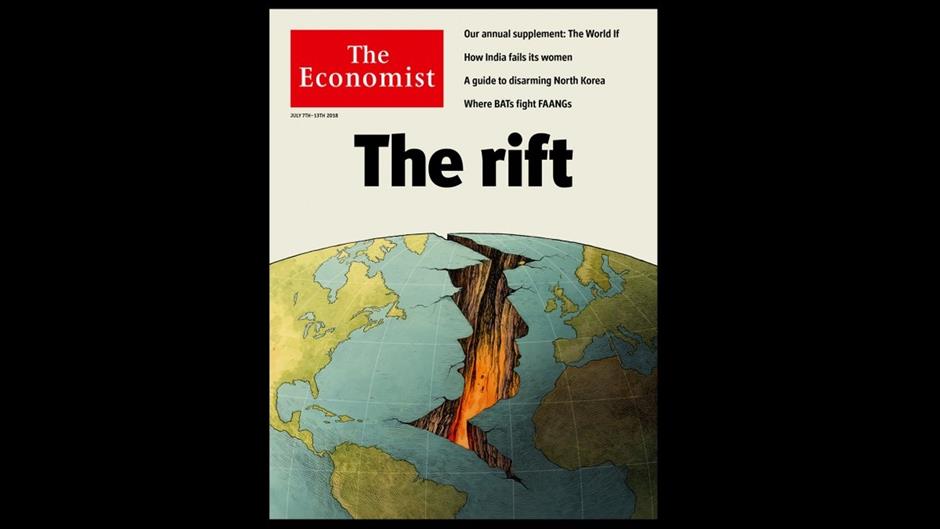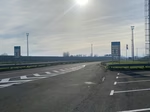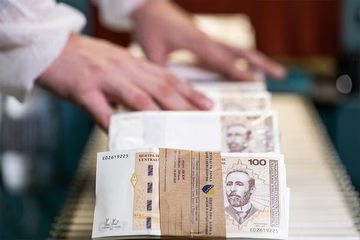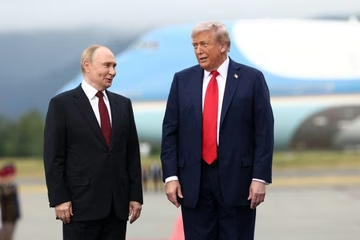
The Western Balkan region is ridden with problems and characterized by high geopolitical risk, among which are "bilateral disputes; lasting enmities from the wars of the 1990s; and the threat of Islamic fundamentalism," a recently published report by the The Economist says.
The 'Western Balkans to 2025: A brighter future or permanent marginalisation?' report states that apart from the tensions between political actors in the region, which includes the countries of Bosnia and Herzegovina, Albania, Serbia, Macedonia and Montenegro, the 'Western Balkans to 2025: A brighter future or permanent marginalization?' report states that the European Union is facing "geopolitical competition in the region from China, Russia and Turkey."
According to Chapter 3 of the report, 'Backsliding on democracy', citizens are dissatisfied with the "post-communist transition after 1989" and have low trust in political institutions. "However, rulers operate through informal power structures, patronage and control of the media. The region’s polities are characterized by weak checks and balances and politicized judiciaries," the report says.
Serbia is a "flawed democracy", according to the Economist Intelligence Unit's 2017 Democracy Index, which ranked Serbia 66th among 167 countries and territories assessed.
All other countries in the region are "hybrid regimes", the report says, with Albania ranked 77th, Montenegro 83rd and Macedonia 88th.
Bosnia lags behind, ranked 101st. The report says that in this country, "parties whose ascendancy often dates back to the war of 1992-95 enjoy dominance over a patchwork of ethnic political fiefdoms, where incumbent leaders shelter in the niches provided by the country’s complex system of devolved governance."
Montenegro and Macedonia are described as countries that practically had a one-party system in place until recently and that are "variously ruled through electoral manipulation and informal networks of clientelism and patronage."
In Serbia, President Aleksandar Vucic has consolidated his power "through a rolling campaign of constant electioneering and control over the media," the report says and in Kosovo, the "main number of competing political parties belies the fact that power has been effectively monopolised by a clientelistic elite drawn mostly from Kosovo’s wartime leaders who led a guerrilla insurgency against Serbian rule in 1998-99, and who have used electoral manipulation to remain in power."
"Among the explanations offered to account for the recent “backsliding” in the western Balkans, the most prominent are the relatively low level of economic development in the region; the impact of an authoritarian Russia’s geopolitical influence; and the absence or failure of EU-mandated reforms and clear EU guidance," the report says.
The economic situation in the region, three decades after the transition period began, is described through three phases: the periods between 1989 and 2000, 2000 and 2008 and post-2008.
According to the research, Albania is the only country where the GDP per capita has grown from 1989 to 2017, when purchasing power is taken into account. Albania's index in 1989 was 15.5, while it was 23.4 last year. Bosnia's index in 1989 was 30.1, much higher than the current 23.5.The country that decreased its index the most in this period is Montenegro, from 51.0 to 32.0.
"The western Balkans’ economies are forecast to grow at an annual average of 3.2% in 2018-19. This is still below the rates achieved before the 2008 crisis and will not allow for a swift catch-up with developed Europe," the report says, but adds that it would still be an improvement compared to recent years.
The region also suffers from mass emigration.
The report predicts that, by 2050, about a half a million citizens will leave Bosnia. The country's population of some 3,5 million in 2017 is expected to fall to 3,05 million in about three decades - a 12.8 percent decrease.
The population of Albania is expected to fall from 2,93 million to 2,66 million, that of Macedonia fro, 2,08 million to 1,9 million, while the population of Serbia, including Kosovo, will fall from 8,79 million to 7,44 million by 2050, the report says.
Infrastructure development is assessed in the report as well. For example, indicators from 2016 say that motorway density per 1,000 square kilometres is at 1.5 in Bosnia, while that number for Albania is 5.9, 9.3 for Kosovo, 7.8 for Macedonia, 7.7 for Serbia and in Montenegro there are no motorways, so it stands at 0.0.
In Bosnia, goods worth some $1773 are exported per capita, while goods worth some $2599 are exported per capita, and with these number the country fares worse than other countries in the region.
Although Bosnia had a large export potential three years ago, standing at $2401 pr capita, it only exported goods worth $1585 per capita, which, translated into percentages, means that the country only used 66 percent of its potential.
Serbia, for example, utilized 90.6 percent of its potential in the same period.
"Anti-democratic trends in the region have been reinforced by the EU’s reliance on a “leader-oriented approach”, by which the EU has cultivated close ties with individual leaders who are viewed as dependable, or at least manageable, interlocutors," the report says."This has strengthened individuals at the expense of representative democracy (...)" it says.
Kakvo je tvoje mišljenje o ovome?
Učestvuj u diskusiji ili pročitaj komentare





 Srbija
Srbija
 Hrvatska
Hrvatska
 Slovenija
Slovenija



























































